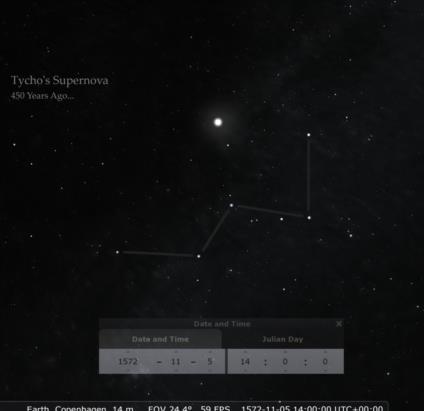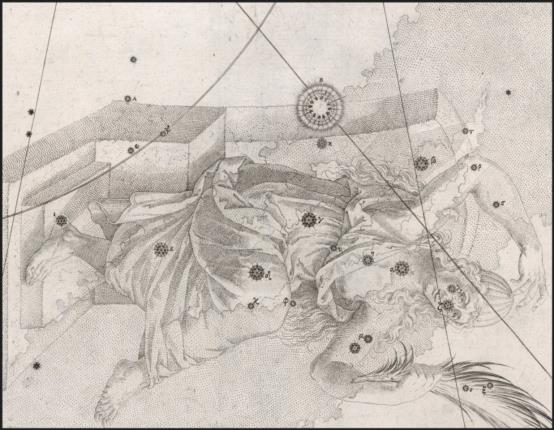
NavList:
A Community Devoted to the Preservation and Practice of Celestial Navigation and Other Methods of Traditional Wayfinding
From: Frank Reed
Date: 2022 Oct 7, 16:50 -0700
Look for the "W" of Cassiopeia in the northeast about an hour after sunset. Now imagine a brilliant new star appearing near it, brighter than Venus. Flaring up so bright it was visible in daylight if you knew just where to look... Fading away slowly over many months. That was Tycho's Supernova back in 1572, 450 years ago this month. It was first visible at the end of October and reached its maximum brightness in early November. We know today that this was a "supernova", a massive star dying... blasting away its outer layers in a colossal explosion, leaving behind a black hole or a neutron star.
Tycho's "nova" or new star was seen in exactly the same location during the course of an entire night from Tycho Brahe's observatory in Denmark. It stayed in the same position relative to the stars of Cassiopeia. Observers in other countries, like Spain, saw it also in exactly the same spot relative to the background stars. There was no shift, and that implied the supernova was far beyond the Moon. The Moon's shift or "parallax" was well-known even to the classical Greek astronomers. Tycho and astronomers of his day, even without telescopes, could detect position shifts as small as 20x less than the Moon's parallax. They saw none. This implied that this new star was, in fact, an exceedingly distant object. Further as the months went by, and the star's position still did not change, the obvious conclusion was that this new star, this "nova", must itself be as distant as the true stars themselves. The heavens were no longer "immutable". The celestial sphere was not changeless. Stars could explode and die. It was a radical idea in 1572.
Frank Reed
Clockwork Mapping / ReedNavigation.com
Conanicut Island USA








